As Moldova strives for UNESCO World Heritage Site recognition for its vast wine cellars, a journey begins to immortalise their history.
Moldova’s extensive wine cellars in Cricova and Mileștii Mici, stretching hundreds of kilometres and housing millions of bottles, captivate tourists who traverse the tunnels in small train-like vehicles.
But there’s an important story that visitors may miss. These tunnels hide the tale of how the capital city of Chișinău was destroyed and then rebuilt. This, in fact, is one of the reasons why Moldova has such a unique underground world today.
- Moldova’s fight for freedom: From banned musicians to Eurovision superstars
- The challenges facing female entrepreneurs in Moldova
- Is Moldova’s diaspora ready to return home?
Guides at Cricova and Mileștii Mici acknowledge that tourists are more focused on the wine than mining history or the reconstruction of Chișinău after World War II. But how could they know to ask?
Much of the story about Moldova’s gigantic wine cellars remains unknown or appears coincidental, like a secret kept in the cellar away from daylight.
Moldovan historian and architect Sergius Ciocanu said that until now, the history of both cellars has relied more on legends than factual documents. “But it may change soon!” he adds.
The Moldovan Ministry of Culture has begun the process of getting both of the world’s greatest underground wine cellars—Cricova and Mileștii Mici—listed as UNESCO heritage sites.
“Our goal is to be on the list by 2030,” explains Sergiu Prodan, Moldova’s Minister of Culture.
Mileștii Mici has already been globally recognised as the world’s largest wine collection. It’s in the Guinness Book of Records with 1.5 million bottles. Cricova is not far behind.
In the Cricova cellar alone, seven kilometres of tunnels are filled with half a million bottles of sparkling wine. Each of the seven women working there daily rotates 35,000 bottles of sparkling wine produced in the style of traditional Champagne.
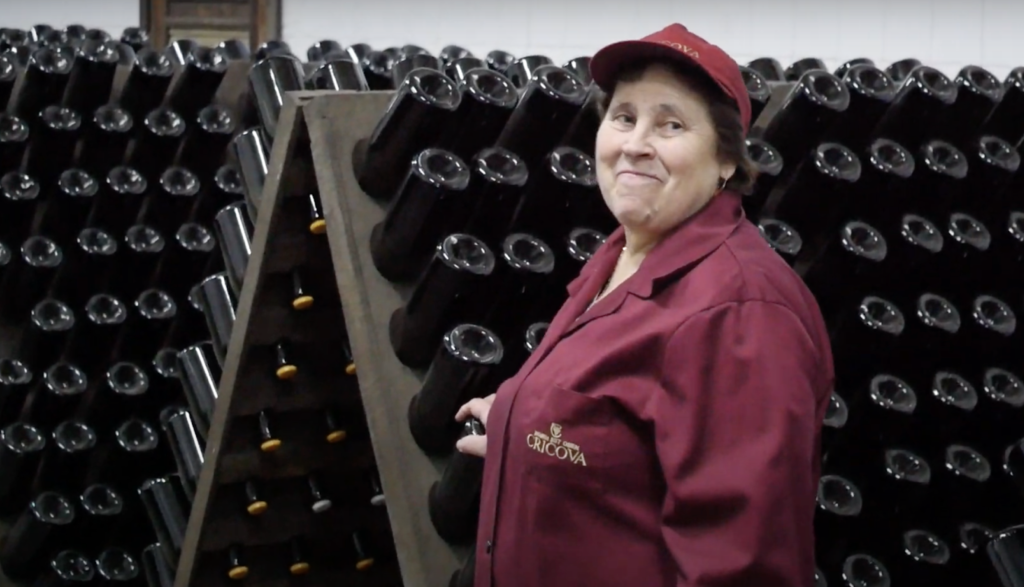
Lidia has been turning the bottles at Cricova for 43 years, since she was 18
Currently there is only one UNESCO heritage site in Moldova: the Struve Geodetic Arc in the north of the country. Astronomer Friedrich Georg Wilhelm von Struve was the first to precisely measure a long meridian segment, which helped determine the Earth’s size and shape. Thirty-four of Struve’s UNESCO points are located across ten countries, with one in Moldova.
“We need to have our own heritage site registered on the UNESCO list. In our view, Cricova and Mileștii Mici are the most important and realistic candidates for inclusion,” says Prodan. In his opinion, Moldova is underrepresented on the famous list.
That suggests that the country is still largely undiscovered.
Prodan has put together a working group comprising historians, archaeologists, industrial developers, and locals led by heritage studies specialist Professor Sergiu Musteață. Underground wineries of this scale are unique to Moldova in both Europe and globally, Musteață says. The process to prove this has now begun.
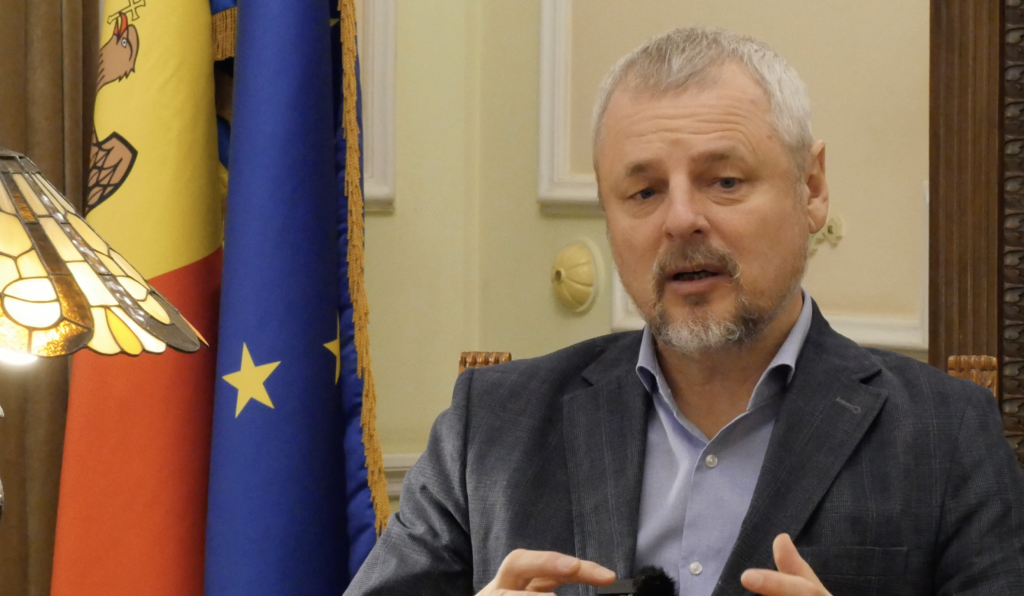
Sergiu Prodan, Moldova’s Minister of Culture
Innovation from a bombed-out city
The story of the Moldovan wine cellars is deeply connected to the devastation caused by war and occupation, and the rapid innovation that often arises during challenging times.
Chișinău was heavily bombed during the fighting between the Nazis and the Soviets. When the Soviets emerged victorious in 1944, the city was in ruins.
“By August 1944, more than two-thirds of Chișinău’s buildings were destroyed,” explains Musteață. There wasn’t much left, with only about 20,000 inhabitants remaining in the city when the Soviet occupation began.
“It became necessary to rebuild Chișinău, and for that, they needed materials,” adds Musteață.
Limestone has been the key construction material in Moldova since the late 19th century. When the Soviet occupation started, mining was taken to a much larger scale.
“White limestone was used to construct buildings. Many houses appeared after the 1950s, ’60s, ’70s, and ’80s,” Professor Musteață adds. Chișinău was hence called the white city.
Researcher Doina-Cezara Albu notes in her study that Moldova began using limestone blocks on a large scale in the 1950s. The Soviets built kindergartens, schools, and apartment buildings known as Stalinkas and Khrushchyovkas out of limestone blocks.
During the Soviet period, Moldova produced up to 1.25 million cubic metres of limestone annually, equivalent to about 500 Olympic-sized swimming pools. By 2000, production had fallen to a quarter of what it was before.
Traces of an ancient sea
Despite lacking a coastline, Moldova is full of signs of the sea, and limestone is one of them. Walking around the capital, you’ll notice that much of the city is built from tiny sea creatures. The landscape appears wavy as if the waves have transformed into hills and ceased motion.
Millions of years ago, the Paratethys Sea covered a vast area stretching from Central Europe to Central Asia. At its largest, it extended across present-day Ukraine, Moldova, Romania, Bulgaria, and Serbia, among other regions.
About five million years ago, the sea shrank and disappeared, leaving traces of its existence, which can be widely seen in Moldova today. This is also why Moldova is rich in limestone and limestone mines.
One working mine is not far from Chișinău’s city centre. If you enter the tunnel in the Râşcani district, you can travel about four kilometres underground northward toward Cricova. Another working mine is located there, near the Cricova wine cellars.
The Chișinău mine is still active, storing limestone blocks that are ready for shipment to construction sites in Moldova. Sergiu Lungu, the mine’s manager, boasts about the high quality of limestone in the country. Studies confirm that Moldovan limestone blocks can withstand strong and catastrophic earthquakes up to eight on the Richter scale.
Lungu has spent 30 years working in the mines. “The mining industry developed during the Soviet times,” he adds, showing how the extraction machines cut out blocks from the limestone walls.
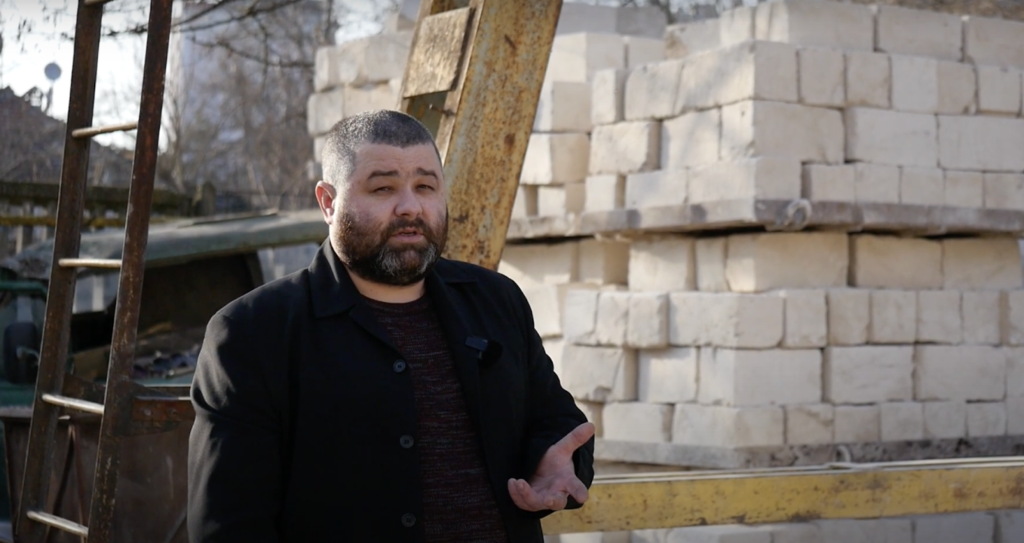
Sergiu Lungu at the Chișinău mine
He tells us that once, there were over 100 mines in Moldova. According to the Moldovan think-tank EXPERT-GRUP, there are 166 limestone excavations in the Republic of Moldova, of which 59 are used for cutting blocks.
Like many others in the country, the world’s biggest wine cellars in Cricova and Mileștii Mici were once nothing more than limestone extraction zones.
Perfect for wine
“The digging of the stone started in the 1950s became extensive, as evidenced by the 200 km length of tunnels,” says Petru Tataru, a guide in Mileștii Mici.
Parallel to the explosive growth of the limestone industry, the Soviets were looking for ways to increase wine production in Moldova—a country well-known for its grape.
“Since the end of the 1950s, there has been discussions about producing wine in industrial quantities and selling it around the Soviet Union. It was necessary to establish a huge area to produce and preserve the wine,” adds Sergiu Musteață.
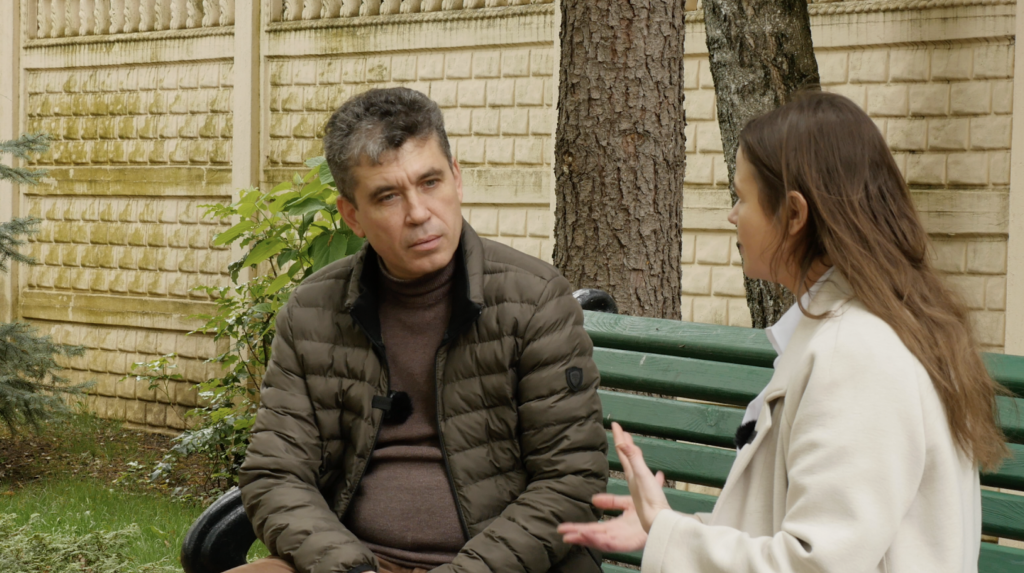
Professor Sergiu Musteață is part of the team helping to get Moldova’s cellars on to the UNESCO list
Then, the idea was developed to experiment with the empty mining areas around the capital city.
“The temperature here is always 12 to 14°C,” explains Veaceslav Dogari, a guide at the Cricova winery “And all this is free; we don’t need extra money to maintain these conditions—it’s natural.”
“It is unique how industrial spaces, after extracting the stone, have been repurposed for a completely different use,” says Musteață, explaining why the giant wine cellars deserve a spot on the list.
After a few years of experiments with wine production, the Cricova wine cellar was officially opened in 1952. By the end of the 1950s, Moldovans had started preserving and producing wine in these cellars. Moldovan wine production became huge in the Soviet Union.
The country is now rediscovering its history and putting together the facts like a puzzle. So that Moldova wouldn’t only be known for its wine but also for the stories behind it. Moldova, it turns out, hides many hidden tales underneath the ground.
This article was co-written by Marian Männi. Top photo: One of Cricova’s wine cellars.
Unlike many news and information platforms, Emerging Europe is free to read, and always will be. There is no paywall here. We are independent, not affiliated with nor representing any political party or business organisation. We want the very best for emerging Europe, nothing more, nothing less. Your support will help us continue to spread the word about this amazing region.
You can contribute here. Thank you.

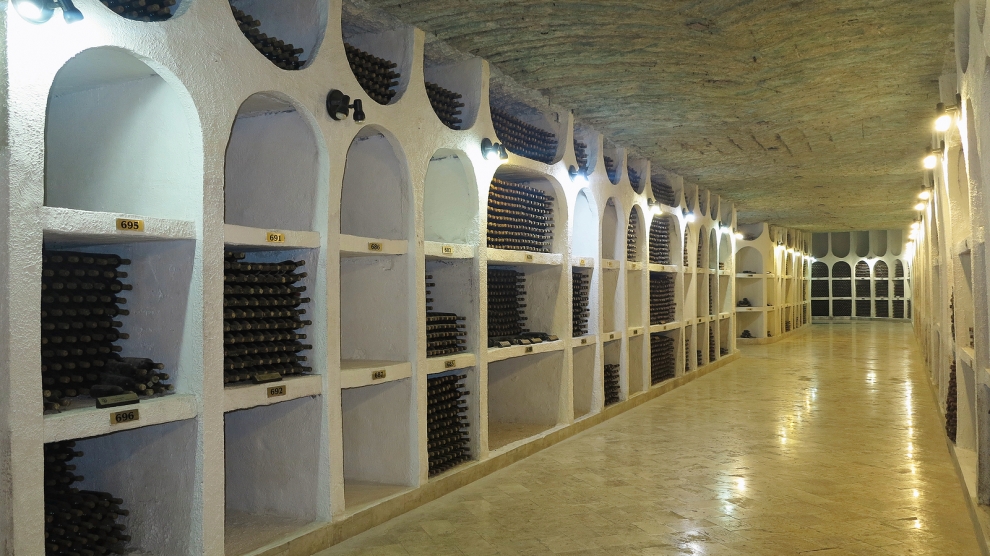

Add Comment